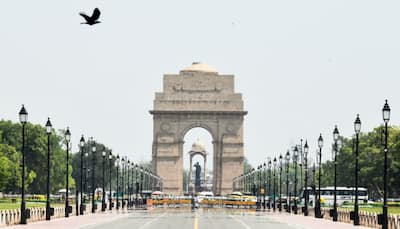Picture a warm April morning in 1853. The sun rises over the bustling port city of Bombay, and a crowd gathers at Bori Bunder station, their eyes fixed on a magnificent steam locomotive. The air is thick with anticipation, the scent of coal smoke, and the promise of a new era. On April 16, 1853, at precisely 3:30 PM, India’s first passenger train, powered by the mighty steam engine Sahib, chugged its way from Bombay to Thane, covering a modest 34 kilometers in about 57 minutes. This wasn’t just a train ride—it was the dawn of the Indian Railways, a moment that would transform the nation’s history forever. Today, as we celebrate the 172nd birthday of this monumental journey, let’s dive into the story of how the Indian Railways began, its profound impact, and why it remains a symbol of progress and unity.
The Birth of a Revolution: Bombay to Thane
The 1853 train journey from Bombay to Thane wasn’t just a technological marvel; it was a bold statement of ambition in colonial India. The British East India Company, recognizing the need for efficient transport to support trade and governance, spearheaded the establishment of the Great Indian Peninsular Railway (GIPR). The idea of a railway in India had been floated as early as the 1830s, but it wasn’t until the 1850s that the vision took shape. The 34-kilometer stretch between Bombay and Thane was chosen as the testing ground for this grand experiment, and the Indian Railways were born.
The first passenger train, comprising 14 carriages and carrying around 400 passengers, was a spectacle. People from all walks of life—British officials, Indian merchants, curious locals—gathered to witness history. The train, pulled by three locomotives named Sahib, Sindh, and Sultan, moved at a leisurely pace, but its significance was anything but slow. For the first time, people could travel faster than a horse or bullock cart, shrinking distances and connecting communities. This moment marked the beginning of the Indian Railways, a network that would grow to become one of the largest and most iconic in the world.
The Journey
What was it like to be on that first passenger train? Imagine the excitement of passengers, many of whom had never seen a steam engine before. The rhythmic chug of the locomotive, the whistle piercing the air, and the sight of the countryside whizzing by at an unprecedented speed of around 35 km/h must have felt like stepping into the future. For some, it was a moment of awe; for others, perhaps a mix of fear and wonder. The Indian Railways weren’t just about technology—they were about people, dreams, and the promise of a connected India.
The Bombay to Thane journey also symbolized a meeting of cultures. The British brought their engineering expertise, but it was Indian laborers, artisans, and communities who helped build the tracks and stations. The railway was a collaborative effort, blending colonial ambition with Indian resilience. Over time, the Indian Railways became a great equalizer, carrying princes and peasants, students and soldiers, in the same compartments, fostering a sense of shared identity.
The Growth of Indian Railways
From that historic 34-kilometer journey, the Indian Railways expanded rapidly. By the end of the 19th century, thousands of kilometers of tracks crisscrossed the subcontinent, connecting cities like Calcutta, Madras, Delhi, and Lahore. The railways facilitated trade, transporting cotton, tea, and spices to ports for export, while also enabling the movement of troops and administrators across the vast colony. But more than that, the Indian Railways became a lifeline for millions, making pilgrimage sites, markets, and distant relatives more accessible than ever before.
The Indian Railways also played a pivotal role in India’s freedom struggle. Trains carried freedom fighters to rallies, spread revolutionary ideas through newspapers, and connected disparate regions in the fight against colonial rule. Mahatma Gandhi himself traveled extensively by train, using the Indian Railways to reach the masses and inspire a nation. The railways, initially a tool of colonial railways, became a platform for unity and resistance.
Challenges and Triumphs
Building and sustaining the Indian Railways was no small feat. The diverse terrain—from the Thar Desert to the Western Ghats—posed engineering challenges. Monsoons, extreme heat, and logistical hurdles tested the resolve of railway workers. Yet, the Indian Railways persevered, with innovations like the Kalka-Shimla Railway and the Darjeeling Himalayan Railway showcasing engineering brilliance. These routes, now UNESCO World Heritage Sites, are a testament to the ingenuity behind India’s railway legacy.
Over the decades, the Indian Railways faced financial struggles, overcrowding, and the need for modernization. Yet, it remained a symbol of resilience. Today, with over 68,000 kilometers of tracks, 7,000 stations, and millions of passengers daily, the Indian Railways is a marvel of scale and efficiency. From steam engines to electric trains, from wooden carriages to air-conditioned coaches, the evolution of the Indian Railways mirrors India’s own journey of growth and transformation.
A Cultural Icon
The Indian Railways are more than a mode of transport; they’re a cultural institution. Bollywood films have immortalized train journeys, from romantic chance encounters to dramatic chases atop moving carriages. The sound of a train’s whistle, the aroma of chai sold at stations, and the sight of vendors weaving through crowded platforms are woven into India’s collective memory. The Indian Railways have inspired poets, writers, and artists, capturing the romance and chaos of travel in a vast, diverse nation.
For many Indians, a train journey is a rite of passage. It’s where strangers become friends over shared meals, where children press their faces against windows to watch the world go by, and where life’s milestones—weddings, job interviews, homecomings—unfold. The Indian Railways, born on that fateful day in 1853, have become a thread that binds India’s 1.4 billion people together.
Looking Ahead: The Future of Indian Railways
As we celebrate 172 years of Indian Railways, the network continues to evolve. High-speed trains like the Vande Bharat Express, metro systems in major cities, and ambitious projects like the Dedicated Freight Corridor signal a new era of innovation. The Indian Railways are embracing sustainability, with plans to electrify tracks and reduce carbon emissions. Yet, amidst this modernization, the essence of the railways—its role as the heartbeat of India—remains unchanged.
The Bombay to Thane journey of 1853 was a spark that ignited a railway revolution. It showed what was possible when vision, technology, and human spirit came together. As we honor India’s railway legacy on its 172nd birthday, let’s reflect on how the Indian Railways have shaped a nation and continue to carry its dreams forward.
Have you ever taken a train journey that left a lasting memory? Share your stories of the Indian Railways in the comments below! Whether it’s a nostalgic ride through the countryside or a bustling commute on a modern train, your experiences are part of India’s railway legacy. Subscribe to our blog for more stories about India’s rich history and join us in celebrating the railway revolution that began 172 years ago.










